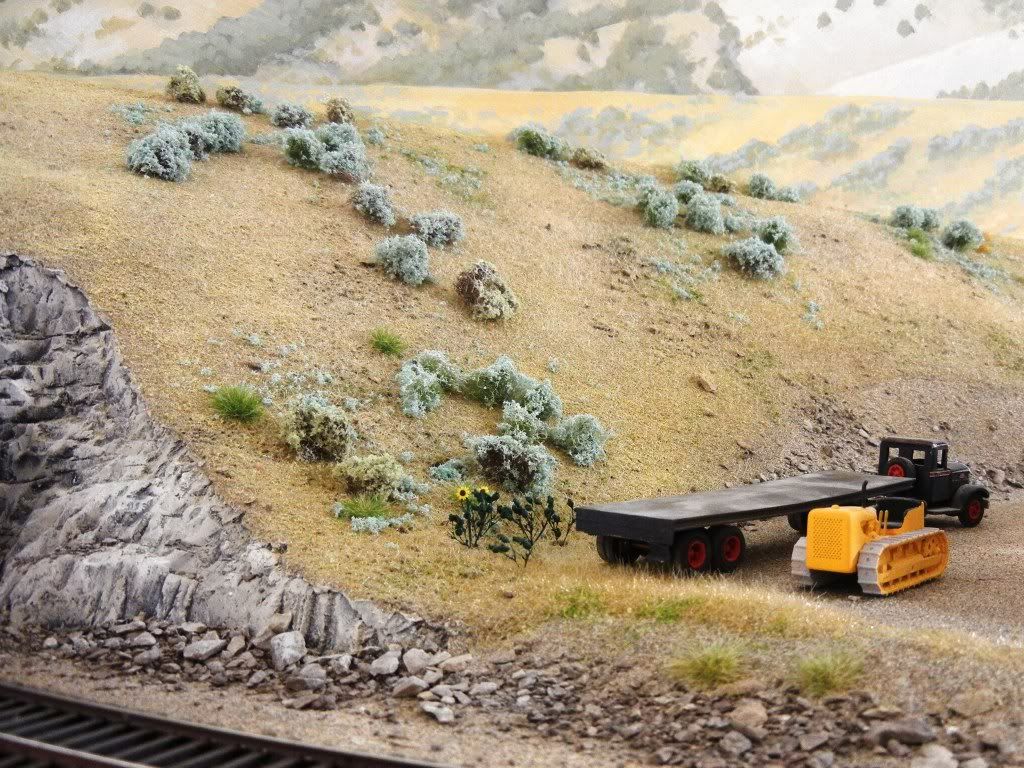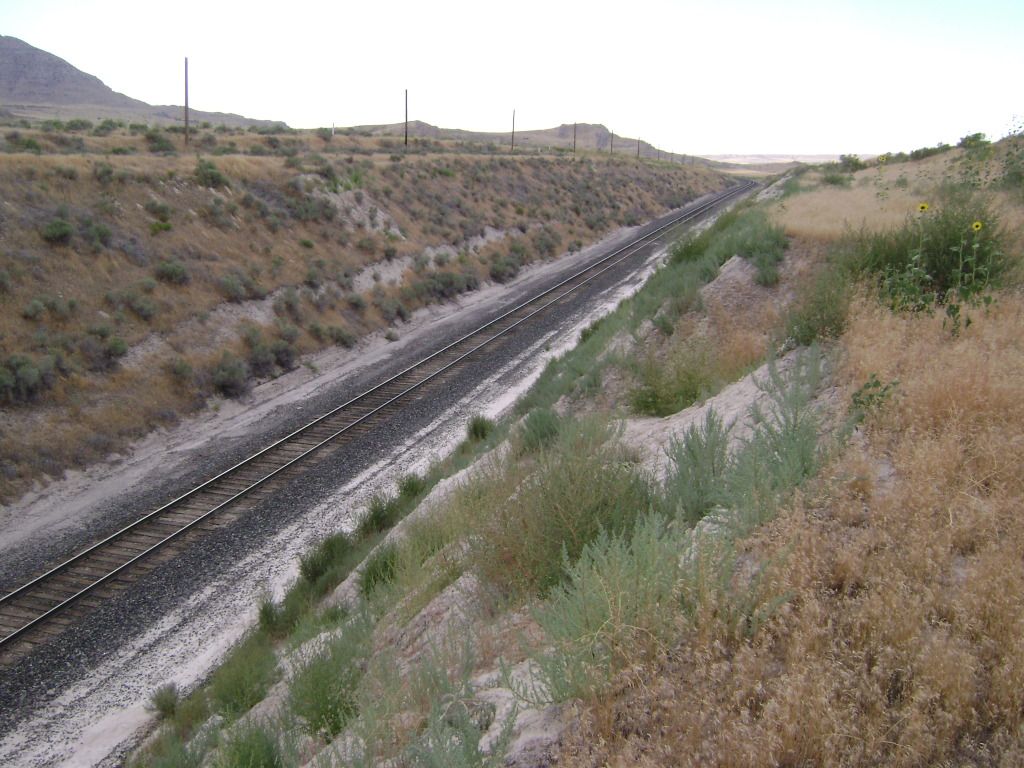Frankly, why pay a lot of money for an applicator from Noch? I used a plastic three tennis ball container and got a Bug Zapper, a couple of alligator clips and a piece of old window screening, and a cheap kitchen sifter (to make circles to fit below the plastic container lid,(with cut out top circle) For less than $10 I have a static grass applicator that works fine. The WS $10 bottles of Static grass go a long way when various shades of green are used to make spots of grass (here and there). Have you ever tried faux fur for your (rolling hills of wheatt)? Bob Hahn
A fine modeler named Lashedup (Jamie) has done a great “review” of not only the applicator but also all the various colors and lengths of grass.
For N scale, a mix of WS 2mm and Heki 4mm (from Scenic Express) makes for some good wild stuff.
In HO I’d throw in some 5 or 6mm here and there to get a more uneven texturing.
Mr. MC,
Do you use the different lengths in subsequent passes or together in one application?
Thx. D
I use a combination of 2mm, 4mm and 6mm static grass from Silflor, Noch and Woodland Scenics in HO (Silflor 6mm Golden Grass, Noch 4mm Beige, and WS 2mm Wild Honey and Harvest Gold). These and other grass colors can be used to make sheets of matching “tufts” using non-stick aluminum foil and Canopy Glue.
I also use a base of dirt first, then a thin layer of ground foam so the grass isn’t completely see-through. Once you get the hang of it, applying static grass is easy and quick. It’s like sifting on ground foam, just with the static applicator. I like how the result has more realistic texture than plain foam.
Cost isn’t necessarily a huge issue once you have the applicator, as even the smaller packages from Silflor and Noch can cover a lot of area, and the larger WS jars even more.
the above scene uses the products I mentioned, plus some tufts made from Silflor 6mm Late Summer (green) and a few others.
Here’s my prototype scenery. I think the static grass really helps with capturing the textures involved.
WOW[bow]very nice work Rob ,Ive been following your latest scenic work. and thanks to others for input on grass selections and useage…Jerry
One of the Noch grasses came with all these little rocks in it. I really like the look it gives. Sorry for the lousy pic.

I also think mixing various lengths all at once gives a much better look.[:)]
Brent[C):-)]
I have not had the opportunity to work with various brands and lengths of static grasses but I have experimented with different bonding mediums. I have found that diluted white glues and/or scenic cements tend to wick up the grass fibers making them stiff like a bristle brush once dry. This effect would probably be quite useful when modeling wild grasses and weeds. However, when modeling grass lawns, I found that using acrylic paint as the bonding medium creates a softer, more velvety grass as the paint grips only the end of the gras fiber and does not wick up its length. The paint color can also be used to create the look of a lush lawn (green paint) or a more sparse lawn (brown/tan paint).
What did you do with the bug zapper?
I bought a GrassTech unit for about $30 on eBay. I’m quite happy with it.
My LHS only had Woodland Scenics static grass, so I bought a couple of canisters. WS only has 2mm lengths, and I found it nice, but it looked more “fuzzy” and less “grassy” than I had hoped for:
So, I ordered some 4mm and 6mm grasses from Silflor, available in the US through Scenic Express. I selected my colors so I ended up with an assortment of colors as well as lengths.
I blend 2 or 3 colors together right in the strainer, breaking it up as I put it in. It’s not important to get an even mix. In fact, I prefer patches of slightly different colors and lengths, blending smoothly into each other.
My base is pink foam with a skim coat of Gypsolite for texture. I add brown craft paint to the Gypsolite, and then paint it with acrylic washes in a camouflage pattern. This is the same base I use for older-style turf and ground foam. I think the base preparation is less important with static grass.
I apply dilute white glue, about 1 part glue to 3 parts water, to the surface, and then stick pins in for electrical contact. I like short, thin pins best. Nails leave big holes when you pull them out, and tall pins end up surprising me with a ferocious static ZZZZAAAPPP! when I get the strainer too close. The reflexive quick pullback of my arm ends up scattering the remaining grass in the strainer all over the place, too. There’s just something about an electrical discharge, even if it’s not going through you, that makes you jump.
Anyway, I shake my blended grass ov
exellant write up mr Beasley;and others thanks for input ,it really helps…
as far as my nock applicator ,yes I’m aware these things can be made quite cheaply but lets call it a gift that would be unwise to sell or not use [;)]…thanks Jerry
There are two leads from the capacitor on the Bug Zapper. You solder an insulated wire with an alligator clip on the end, to snap onto the pins as you move about with the application. The other capacitor lead has a wire soldered to it and to the screen wire on the static grass container. Tapping the container lets the static grass pass through an pick up a charge, and be discharged by the pin. It works fine for various lengths of grass. Static grass is far too expensive for large dense areas of application. I use faux fur and spray color it and then use an old fine tooth comb, to distribute the paint. Bob Hahn
Been a work in progress. Took three 100uf 63v capcitors and stuck them a bread board wich the power came from an old batery operated car. I have yet to hook it up to a kitchen sivv but it make’s a pretty nice spark.

